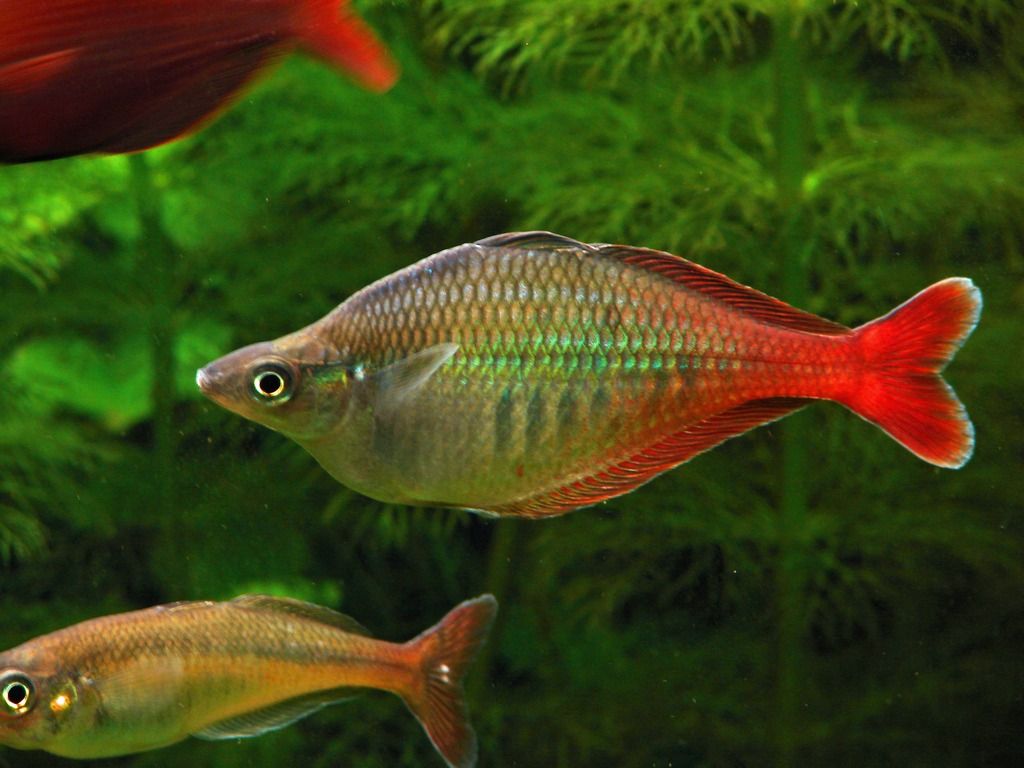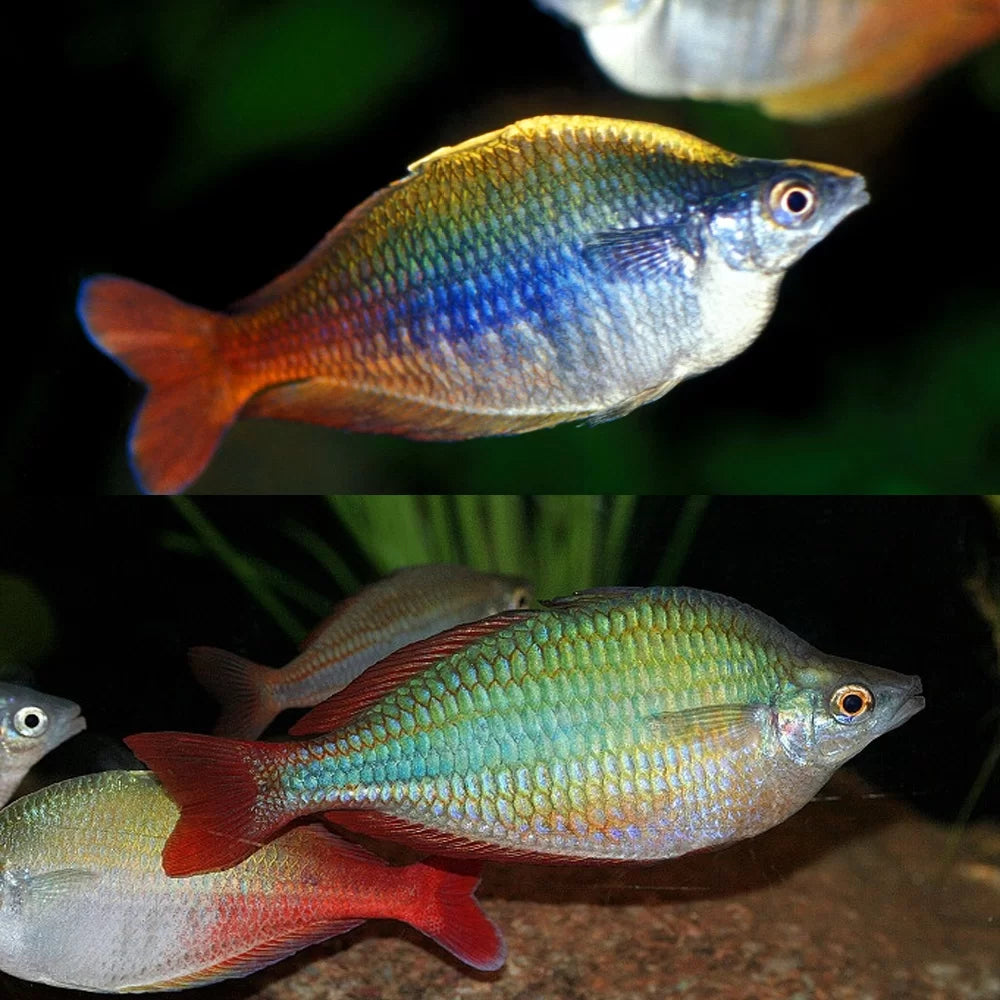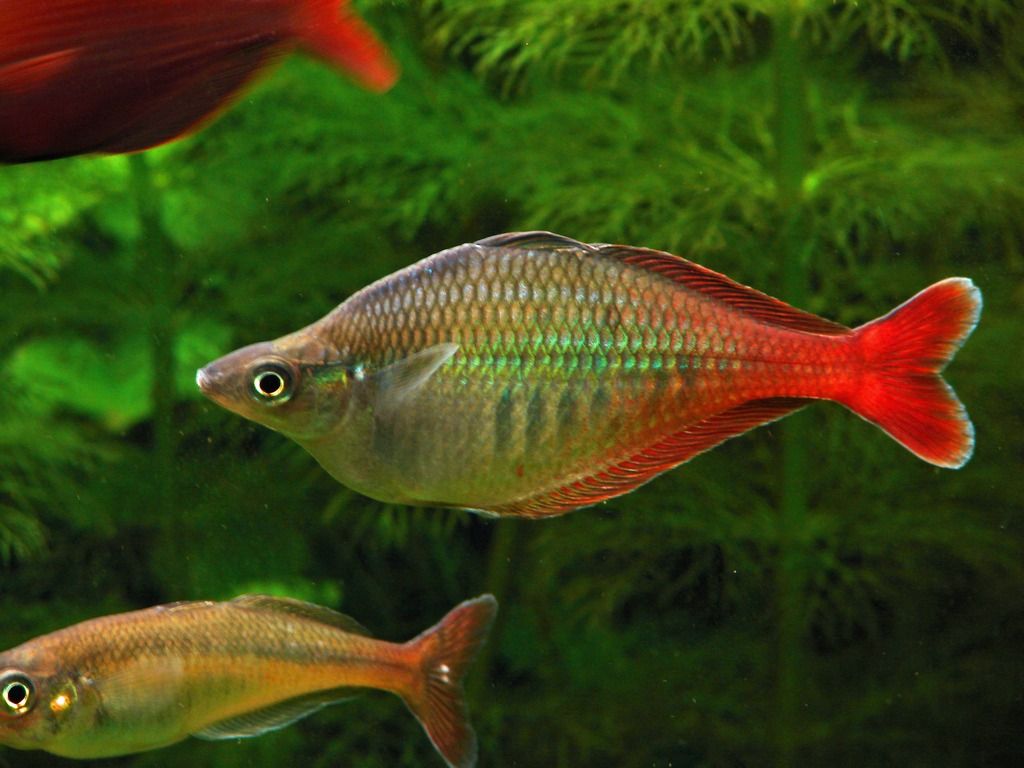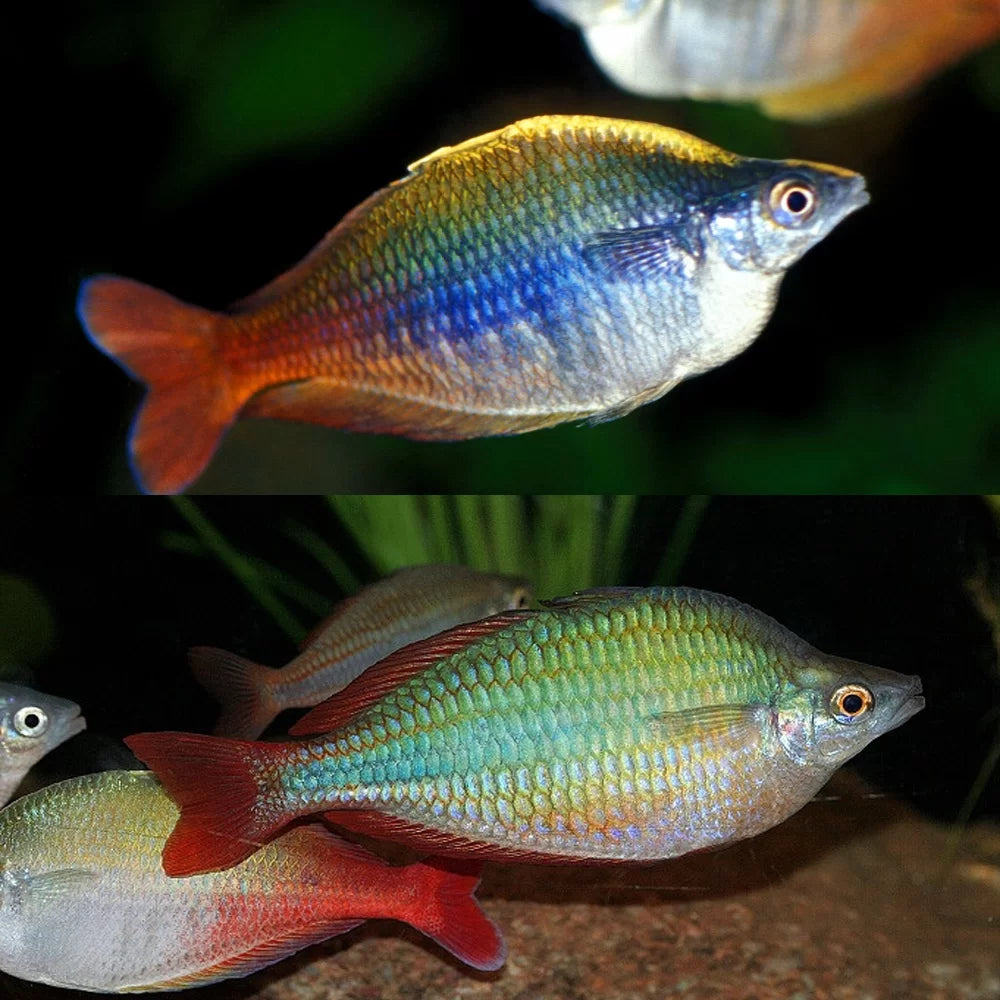Rainbowfish - Bleheri (Chilatherina bleheri)
Rainbowfish - Bleheri (Chilatherina bleheri)
Scientific Name: Chilatherina bleheri
Common Name: Bleher's Rainbowfish
Max Size: 5"
pH: 7.0-8.0
Hardness: Moderate
Temperature: 70-80°
Aggressiveness: Peaceful
Region of Origin: Oceania
Diet: Small flake or pellet, small frozen or live foods
Compatibility: Schooling fish, livebearers, rainbowfish, small catfish. Peacock Gudgeons and Panda Garra are a great choice.
Remarks: As with all rainbowfish, males will be more colorful and have longer fins.
Chilatherina bleheri is a very attractive rainbowfish. They generally have a silvery or bluish-green body colour on the upper back fading posteriorly to pastel shades of yellow to red. The scales on the front half of the body, particularly on the dorsal region, have broad yellow-green margins; the first dorsal fin charcoal grey; second dorsal fin grey suffused with red; caudal and anal fins red; pelvic fins reddish anteriorly with remainder white or translucent; pectoral fins translucent. The lower side of the body is white with a series of faint vertical dark markings. Females lack the vivid red hues and are mainly silvery or pale-bluish grading to grey or greenish-brown. Males display a brilliant yellow-orange stripe on the middle of the forehead during spawning. In addition to the differences in colour pattern and fin lengths between the sexes of C. bleheri, there is also a significant difference in the maximum body depth. Mature males are much deeper bodied than females with older males developing a very deep body. Males may reach a maximum size of 12 cm, but females are usually less than 10 cm. C. bleheri are essentially carnivorous, feeding on a variety of terrestrial and aquatic insects, insect larvae, and small aquatic crustaceans. Aquatic algae and fallen plant pollens are also ingested.
Chilatherina bleheri is most closely related to C. fasciata a widely distributed species inhabiting northern New Guinea in the region between the Markham and Mamberamo Rivers. The two species differ primarily with respect to size of scales and colouration, particularly of mature males. The scale difference is reflected in several counts with C. bleheri invariably having smaller scales and hence higher counts: vertical scale rows - 43 to 50 vs. 39 to 44 for C. fasciata; horizontal scale rows 14 to 16 vs. 11 or 12 and predorsal scales 22 to 25 vs. 18 to 22. The males of C. fasciata lack the red coloration of C. bleheri and often possess a series of dark bars on the lower side above the breast region
Share




